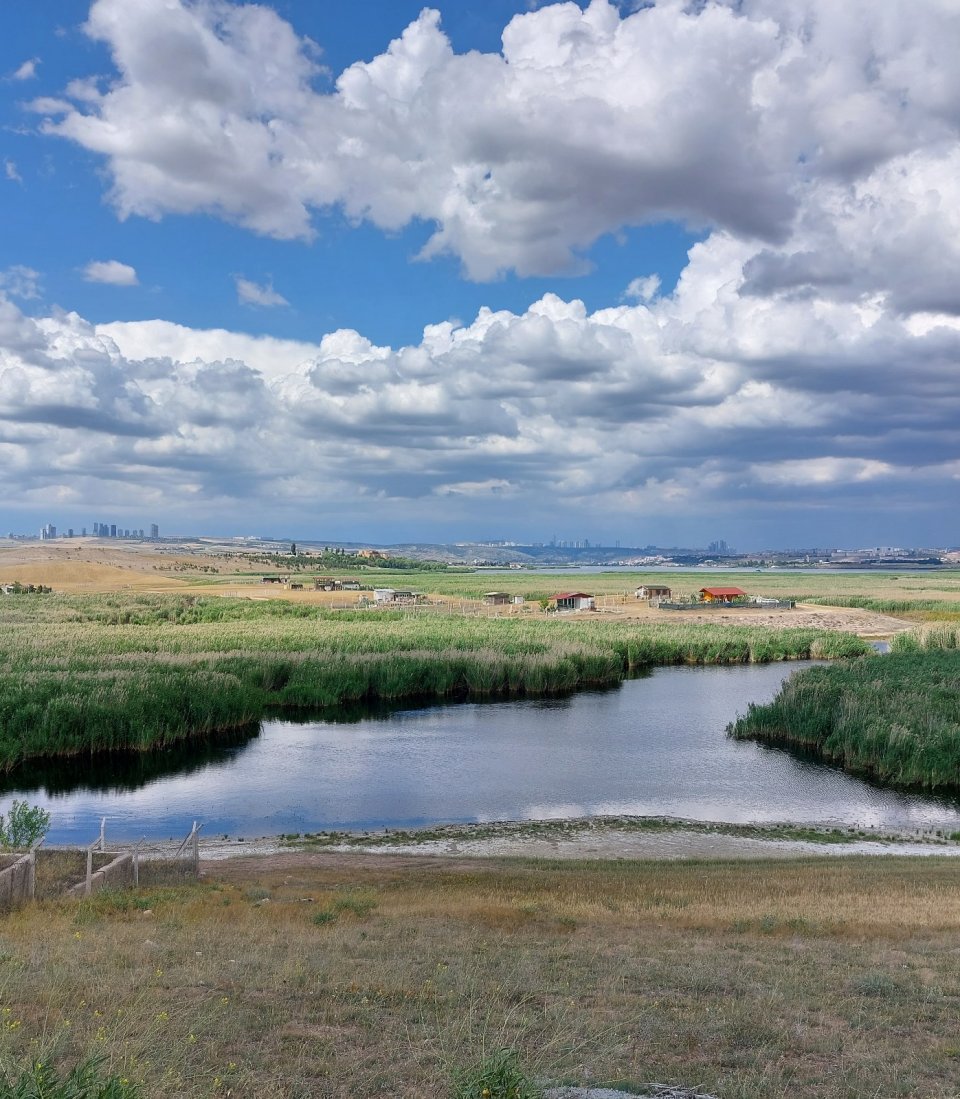
The Lake Mogan Pondscape, located in the Gölbaşı Special Environmental Protection Area (SEPA), spans 1.83 km² and contains 15-20 ponds. These ponds, along with Lake Mogan, are vital for water quality improvement and biodiversity, especially for waterbirds. Gölbaşı District Municipality manages the area and it is publicly accessible, with footpaths and cycling routes available. However, urbanization, waste disposal, and water abstraction threaten the natural water flow and biodiversity. Despite these challenges, the area remains a critical urban green space, contributing to flood mitigation and offering recreation for people.
The Lake Mogan Pondscape aims to conserve biodiversity, improve water management, and provide recreational spaces. It also plays a critical role in flood mitigation, provides nature’s contributions to people such as habitat provision and water quality regulation.
- Regular monitoring of bird species and water quality
- Protection of sensitive areas during breeding seasons for biodiversity
- Public education programs on the ecological value of the pondscape
- Removal of solid waste and restoration of reedbeds
- Limiting urban development and recreational activities near sensitive habitats
- Biodiversity Enhancement
- Human Health
- Developing climate change adaptation; improving risk management and resilience
- Increasing infiltration
- Reduce drought risk
- Reduce flood risk
- Reduce run-off
- Restoring ecosystems and their functions
- Increase Biodiversity
- Increase quality and quantity of green and blue infrastructures
- Improve water quality
- Increase accessibility to green open spaces
- Increase social interaction
- Provision of health benefits
- Social learning about location & importance of NBS
The Lake Mogan Pondscape’s nature-based solutions can be a model for other urban and semi-urban areas facing similar issues. By integrating water management, biodiversity conservation, and recreational use, these strategies can be adapted for regions dealing with urbanization pressures. Balancing conservation with public use can protect biodiversity while conserving flood mitigation potential and improving social well-being in urban landscapes.
The Lake Mogan Pondscape faces a threat of urban expansion, waste disposal, and water abstraction. Better stakeholder coordination and effective and efficient conservation policies are needed. Managing human activity and restoring reedbeds with scientific methods are key to maintaining biodiversity and water quality.
Further information
- 3. Good Health and Well-being
- 6. Clean Water and Sanitation
- 11. Sustainable Cities and Communities
- 13. Climate Action
- 14. Life Below Water
